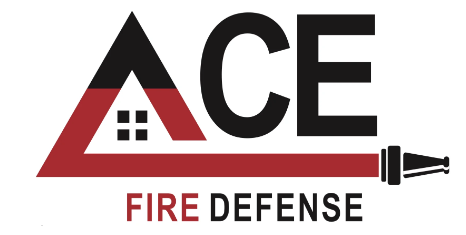I have not pressurized, but this hose appears to be very good quality. Time will tell.
Like so many in California, we live on the wildland interface, which is constantly under threat of fire. We’re lucky to have fire hydrants in our neighborhood and we’ve considered getting some hose, nozzles and tools for that “just in case” situation where things are so bad the fire department is delayed arriving (it’s happened before within a couple of miles from here). The goal is to just keep any fire at bay long enough for the fire department to get here and save the house and outbuildings that otherwise may have caught fire.
I’m no firefighter, but I can read, operate a fire hydrant, and hook up hose and nozzle to get water on areas where embers might start a blaze. If I never have to use this equipment, I’ll consider myself lucky. But, if I need it, I have it. It could easily be the difference between a standing house or one of many burned out lots in the subdivision.
The quality of Ace’s products are more than sufficient for this use case, without paying 1.5x to 3x the price for gear sold to fire fighters for more frequent use. We tested the equipment on our local hydrant that the water company reports is at 130 psi with no issue.
Customer service is great, with Sherwin reaching out to see if we need any assistance and are happy with the purchase.
Like so many in California, we live on the wildland interface, which is constantly under threat of fire. We’re lucky to have fire hydrants in our neighborhood and we’ve considered getting some hose, nozzles and tools for that “just in case” situation where things are so bad the fire department is delayed arriving (it’s happened before within a couple of miles from here). The goal is to just keep any fire at bay long enough for the fire department to get here and save the house and outbuildings that otherwise may have caught fire.
I’m no firefighter, but I can read, operate a fire hydrant, and hook up hose and nozzle to get water on areas where embers might start a blaze. If I never have to use this equipment, I’ll consider myself lucky. But, if I need it, I have it. It could easily be the difference between a standing house or one of many burned out lots in the subdivision.
The quality of Ace’s products are more than sufficient for this use case, without paying 1.5x to 3x the price for gear sold to fire fighters for more frequent use. We tested the equipment on our local hydrant that the water company reports is at 130 psi with no issue.
Customer service is great, with Sherwin reaching out to see if we need any assistance and are happy with the purchase.
We are very pleased with Ace's products, It is every bit as good as advertised. We are even more impressed that Ace would come out personally and show us exactly how to use the product by setting up a live demonstration. I will sleep a lot better knowing that I have a good fire defense system in place, should ever the need to use it occur.
We recently purchased fire fighting equipment for our entire neighborhood. Looking forward to the added longevity at these thick walled hoses, and not very much more than the thinner walls. Our experience with Ace has been extremely smooth. The owner was very, very helpful to us.
Our neighborhood pulled funds together to buy for fighting equipment. Ace has quality i trust and good prices. Customer service was excellent. Highly recommended! The owner really cares because he lives in a high fire zone threat area too.
What a pleasant experience getting the equipment I needed replaced after the Palisades fire. Ace has the best quality gear, knowledge and experience to set you up!
S
Fire Hose, Single Jacket, 75' x 1.5" TPU Liner, NH Gold Aluminum Couplings I bought two of these houses for home defense with a water pump and they are extremely well-made. Amazing quality. Buy them! Don’t hesitate! Thank you, Sherwin!
I bought two of these nozzles and they worked perfectly. Great quality! Do not hesitate to buy. Thank you so much!
Very good quality device, valves tight and smooth. Delivery was quick as well. Hopefully we never need to use it, but I'm confident it will do the job if we do need to!


